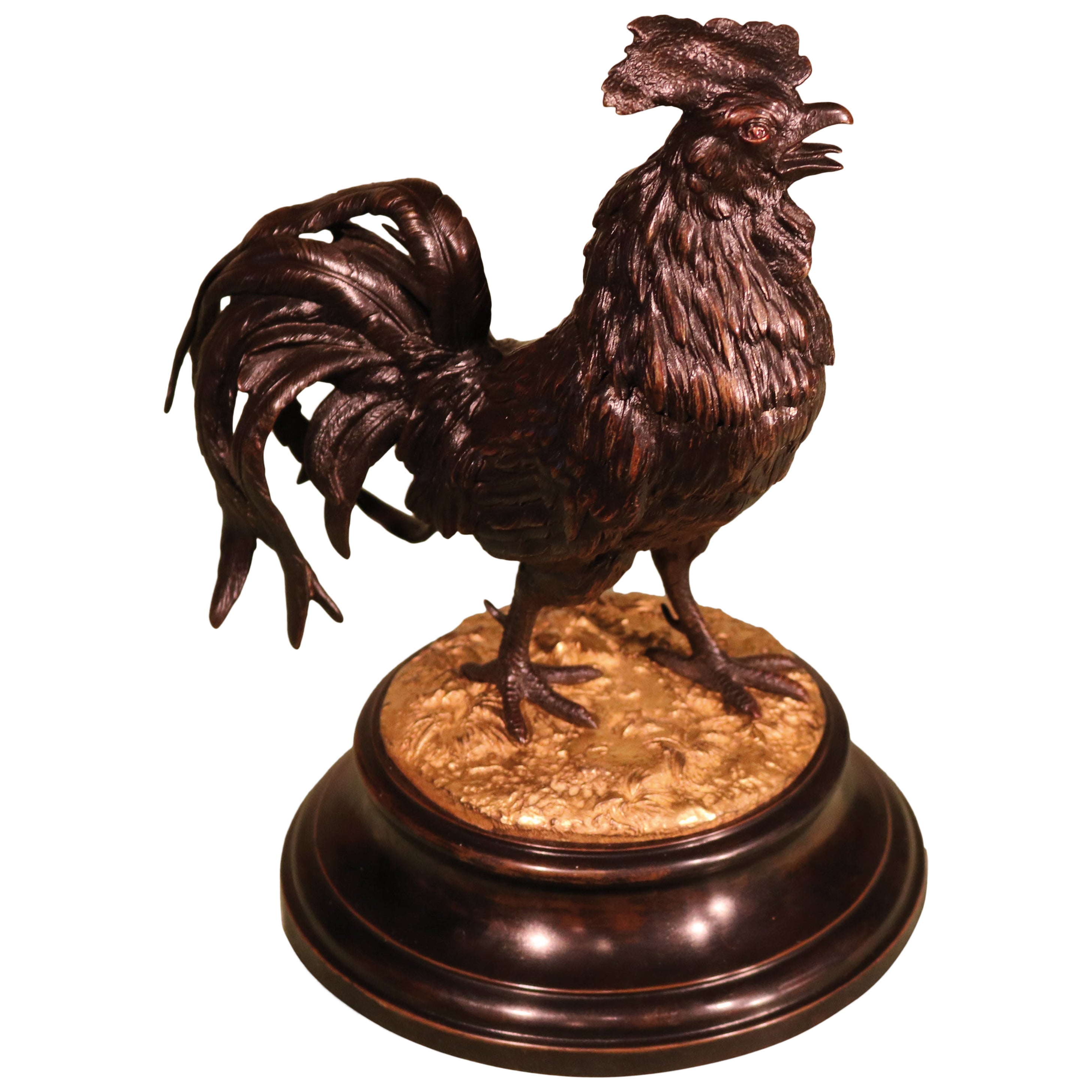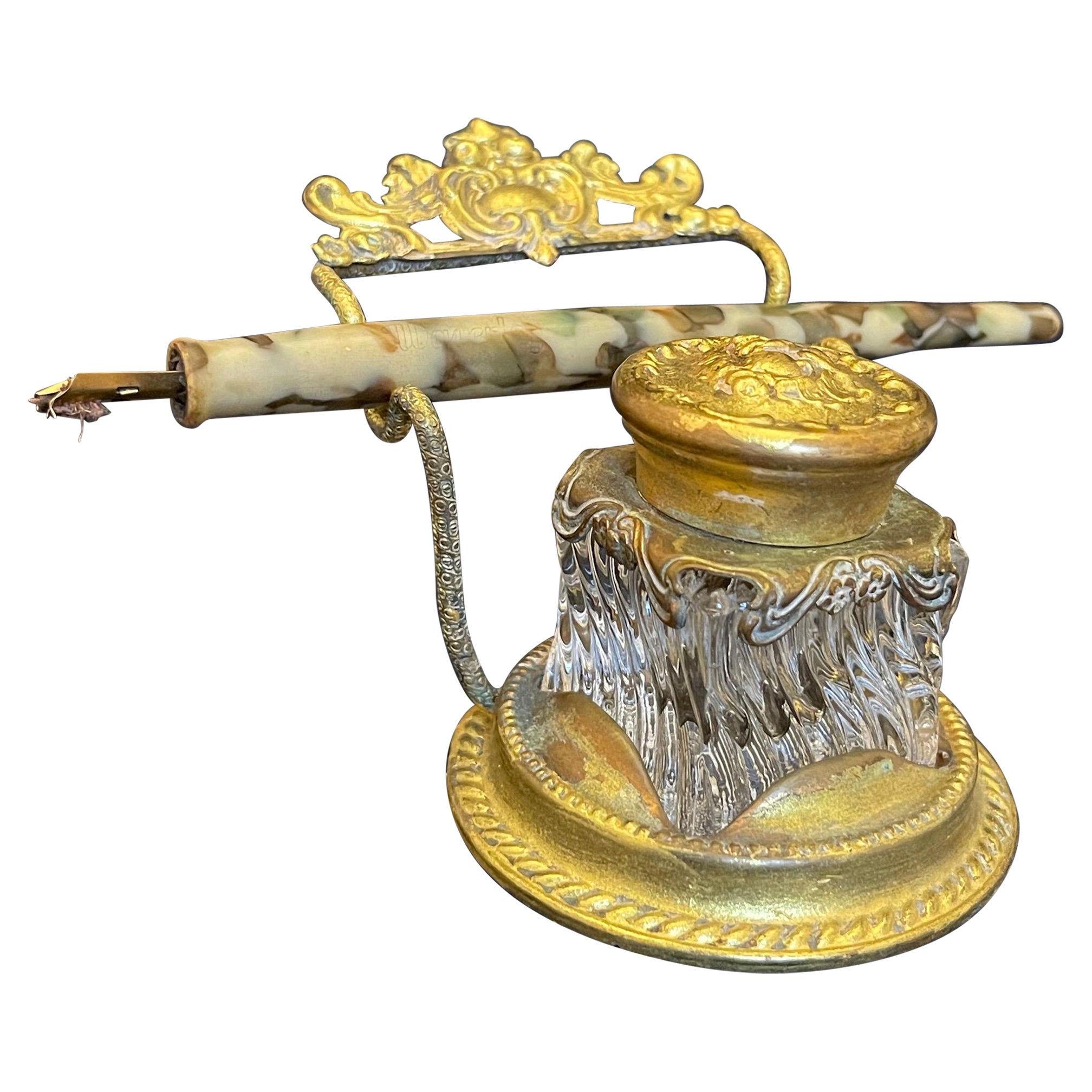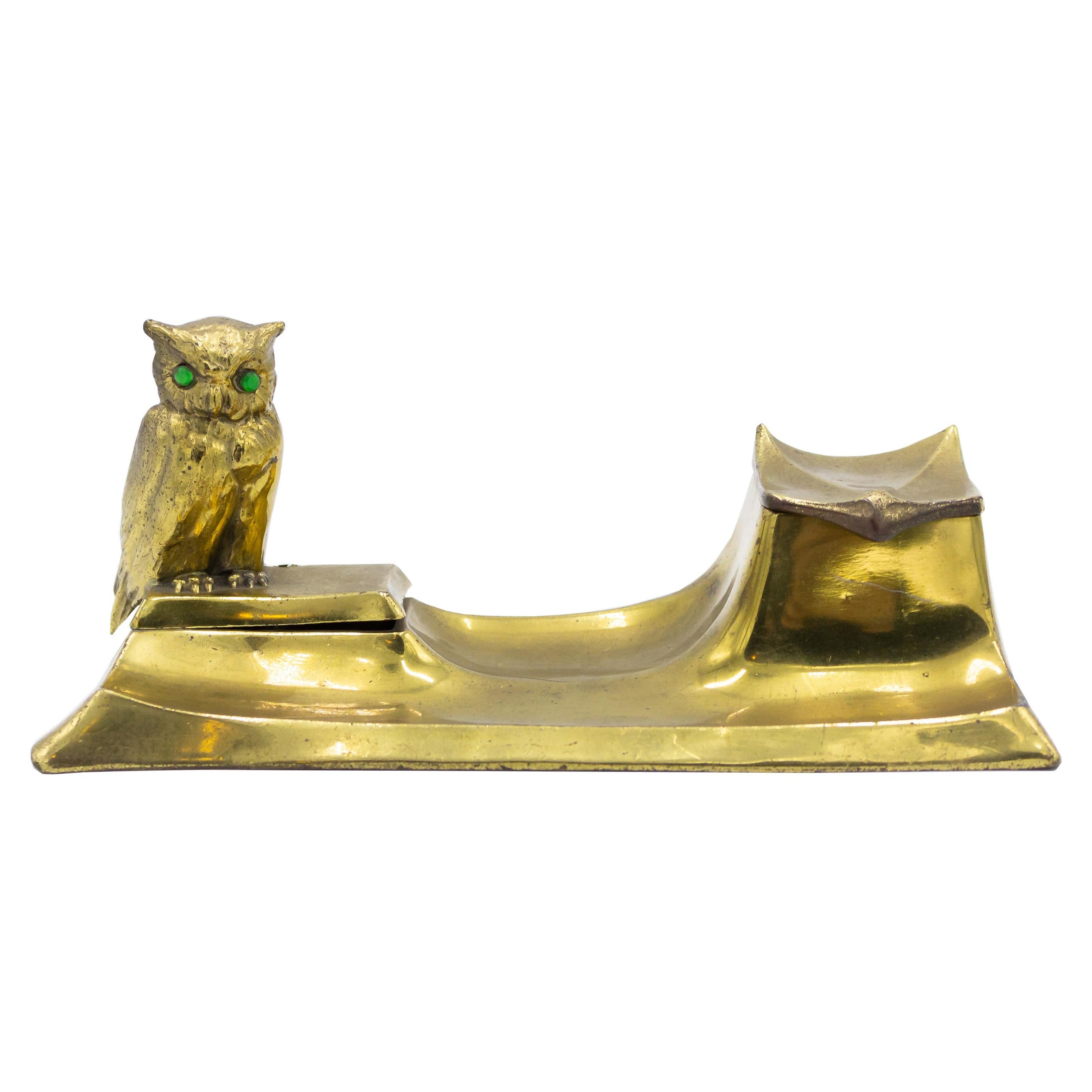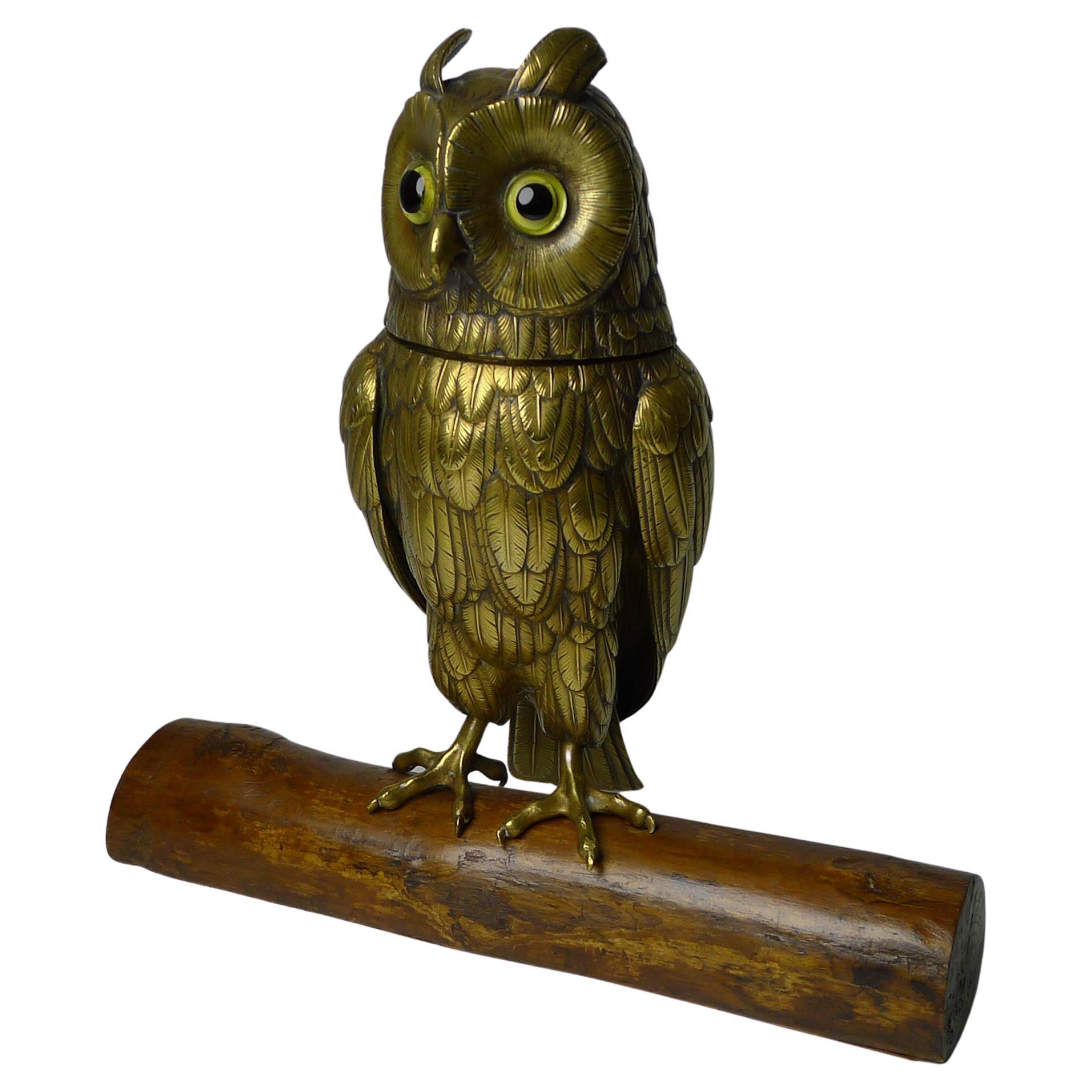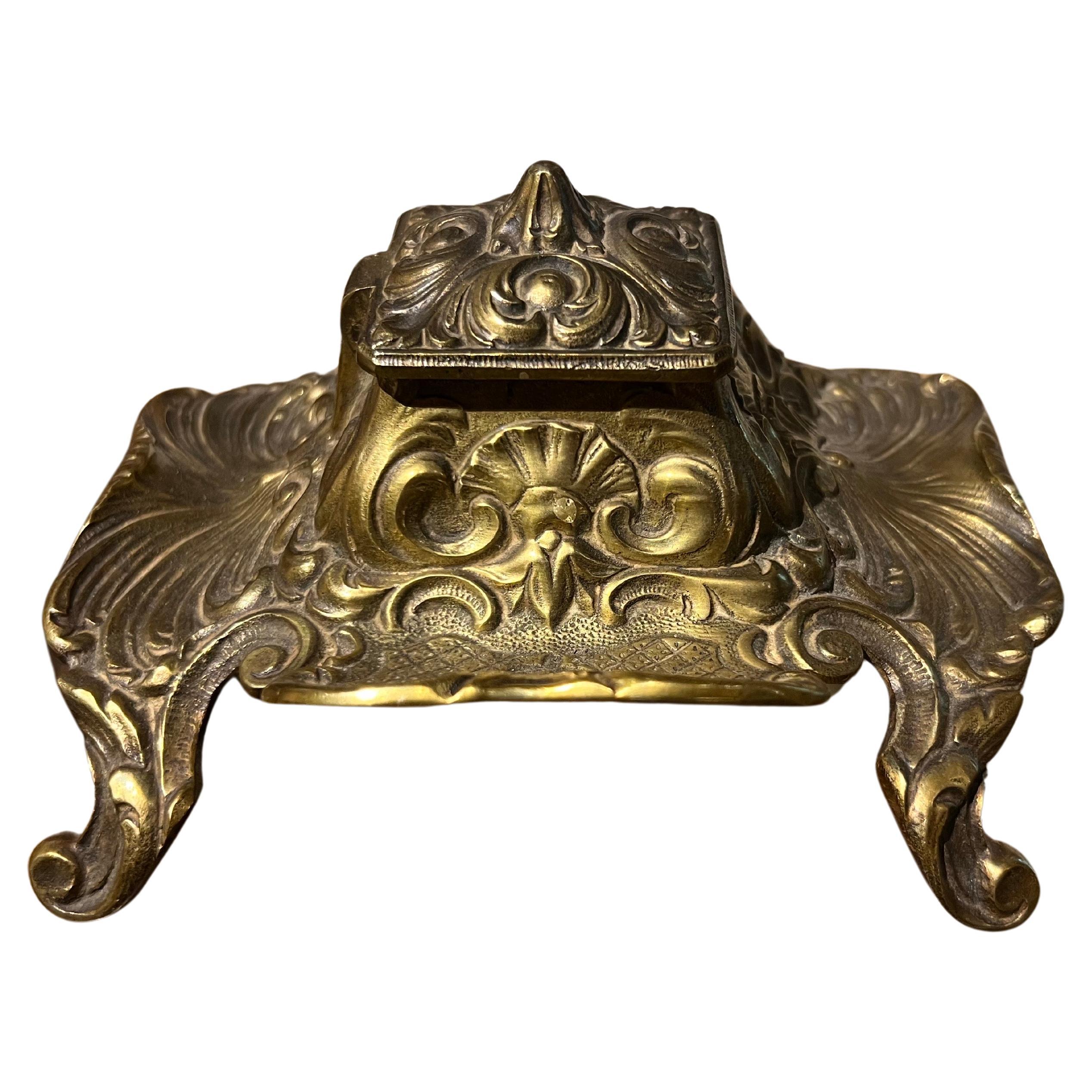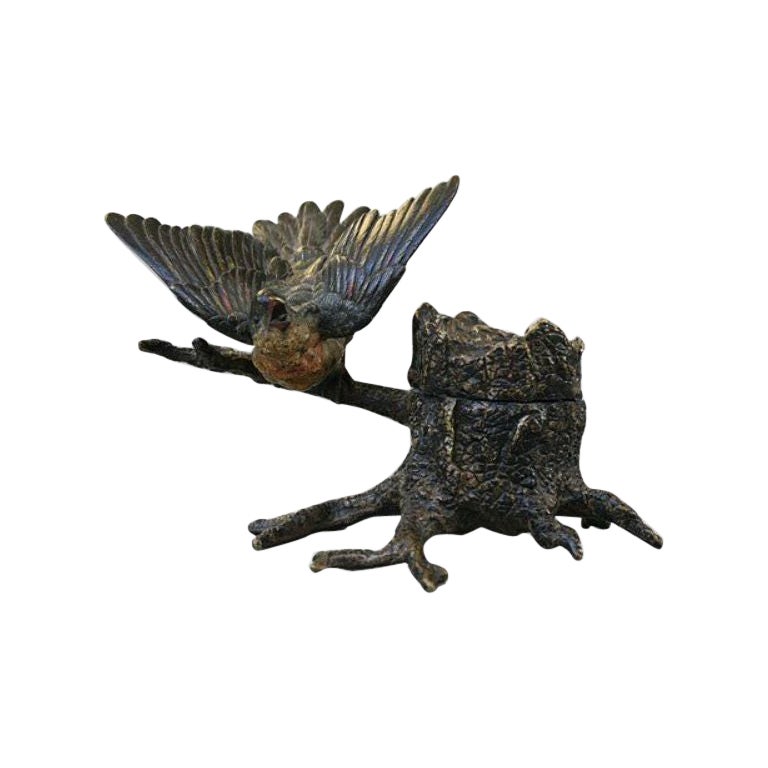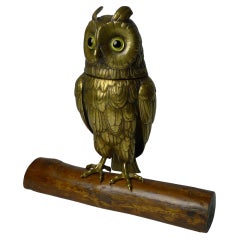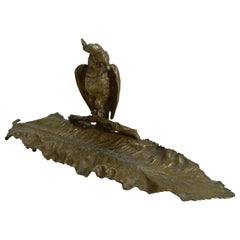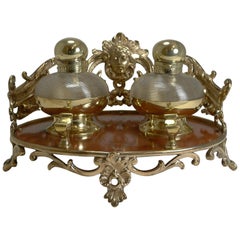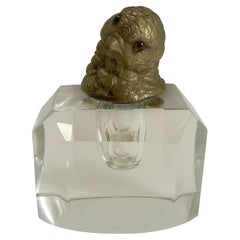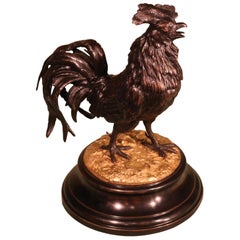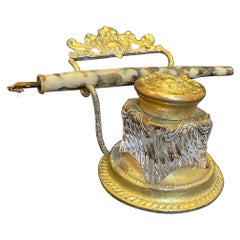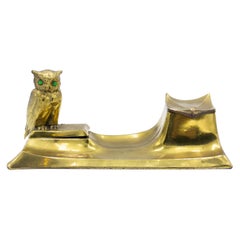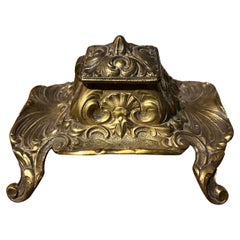Gilded Austrian Bronze Inkwell / Pen Rest, Signed Bergmann
About the Item
- Creator:Bergmann Foundry (Maker)
- Dimensions:Height: 6 in (15.24 cm)Width: 15 in (38.1 cm)Depth: 3 in (7.62 cm)
- Style:Edwardian (Of the Period)
- Materials and Techniques:
- Place of Origin:
- Period:1900-1909
- Date of Manufacture:circa 1900
- Condition:Wear consistent with age and use.
- Seller Location:Bath, GB
- Reference Number:Seller: 406291stDibs: LU3365316026842
Bergmann Foundry
Globally celebrated Austrian metalworker Franz Xaver Bergman(n) is known for his bronze statuettes and figurines, which are rich with personality and alive with color.
Bergmann's father, Franz Bergmann, Sr., apprenticed under Josef Ott and became a professional caster and chaser, and moved from Gablonz, Bohemia, to Vienna in 1860, where he opened a small foundry. There, he used what he’d learned about naturally patinating bronzes and created popular figurines and sculptures. At the turn of the century, Franz Xaver inherited the company from his father and opened a second foundry.
At the Bergmann Foundry, Franz Xaver Bergmann created numerous bronze figures, employing a technique now known as “cold painting” that has since been lost to time. Bergmann’s early works were based on his father’s molds. He hired local workers to cast his own designs.
Bergmann’s works encompass an immense variety of subject matter. His foundry created bronzes of humanized animals, mythological creatures and animals in natural poses. Many of his statuettes are representative of his fondness for faraway lands and peoples, with a great number of his works depicting Native American, Asian, Persian and Arabian cultures. He's also known to have created some risqué Art Nouveau figurines — to some collectors, the Bergmann Foundry is known for its sculptures of women in various sensuous poses wearing ingeniously executed removable articles of bronze clothing.
Franz Xaver Bergmann’s recognized maker’s mark was a capital “B” inside a scrolled horseshoe, but Bergmann would employ the pseudonym "Nam Greb" — the reverse of his last name — on his racier pieces in order to keep his more conservative and conventional customers from connecting his name to those works.
Bergmann had to close his company’s doors in 1930 owing to the financial strains that came with the Great Depression. He died in 1936 before the company could open again. His son, Robert Bergmann, reopened the foundry many years later and continued to own and operate it until his death in 1954.
Karl Fuhrmann & Co. purchased what remained of the Bergmann Foundry after Robert died. Franz Xaver Bergmann’s cast-bronze figures endure to this day and are highly prized by collectors and enthusiasts of figurative art.
Find antique Bergmann Foundry decorative objects on 1stDibs.
- ShippingRetrieving quote...Shipping from: Bath, United Kingdom
- Return Policy
More From This Seller
View AllAntique 1890s British Late Victorian Inkwells
Brass
Antique 1880s English Late Victorian Inkwells
Brass
Antique 1870s English Late Victorian Inkwells
Vintage 1920s English Art Deco Inkwells
Crystal, Bronze
Antique 1890s British Late Victorian Inkwells
Brass
Antique 1890s British Late Victorian Inkwells
Brass
You May Also Like
Antique Mid-19th Century English Victorian Inkwells
Bronze
Antique 19th Century French Inkwells
Bronze
Antique Late 19th Century British Victorian Inkwells
Brass
Antique Late 19th Century French Louis XV Inkwells
Brass
Antique 19th Century Inkwells
Bronze
Antique Early 1900s European Art Nouveau Inkwells
Bronze
